In the dynamic landscape of English Language Teaching (ELT), the traditional paradigm of assessments is evolving to embrace a more student-centered and engaging approach. By delving into alternative assessment methods, educators are unlocking pathways to enhance student learning experiences in ways that transcend conventional tests and quizzes.
The journey towards empowering ELT students through innovative assessment practices not only reimagines how language proficiency is evaluated but also revolutionizes the very essence of learning in linguistic contexts.
Empowering ELT Students Through Alternative Assessment Methods
Gone are the days when standardized exams were the sole measure of English language competency. This exploration into alternative assessment methods marks a pivotal shift towards embracing diverse tools and techniques that cater to the multifaceted needs of learners. From project-based assessments that foster collaboration and critical thinking to self-reflection activities that empower students to take ownership of their progress, this revolutionary wave in ELT assessment sets a new standard for experiential learning.
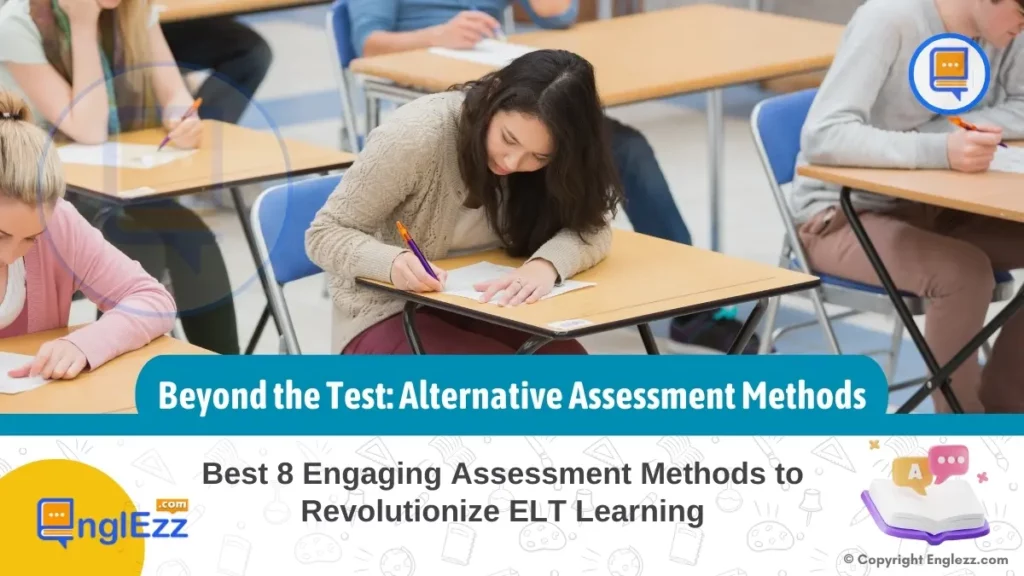
As we navigate this transformative realm together, let us embark on a journey that transcends boundaries, challenges norms, and ignites a passion for lifelong learning among educators, English language teachers, and education professionals alike. Join us as we unravel the tapestry of engaging assessment methods poised to breathe new life into ELT classrooms worldwide.
Project-Based Assessments
Project-based assessments offer a dynamic approach to evaluating language proficiency beyond traditional tests, fostering a deeper understanding of students’ abilities in real-world contexts. By engaging learners in hands-on and collaborative projects, educators can assess not only linguistic knowledge but also practical communication skills and cultural awareness. For example, asking students to develop a multimedia presentation about a cultural topic not only evaluates their language skills but also explores their intercultural competence and creativity. These assessments encourage students to apply language learned in class to authentic scenarios, preparing them for effective communication in diverse settings.
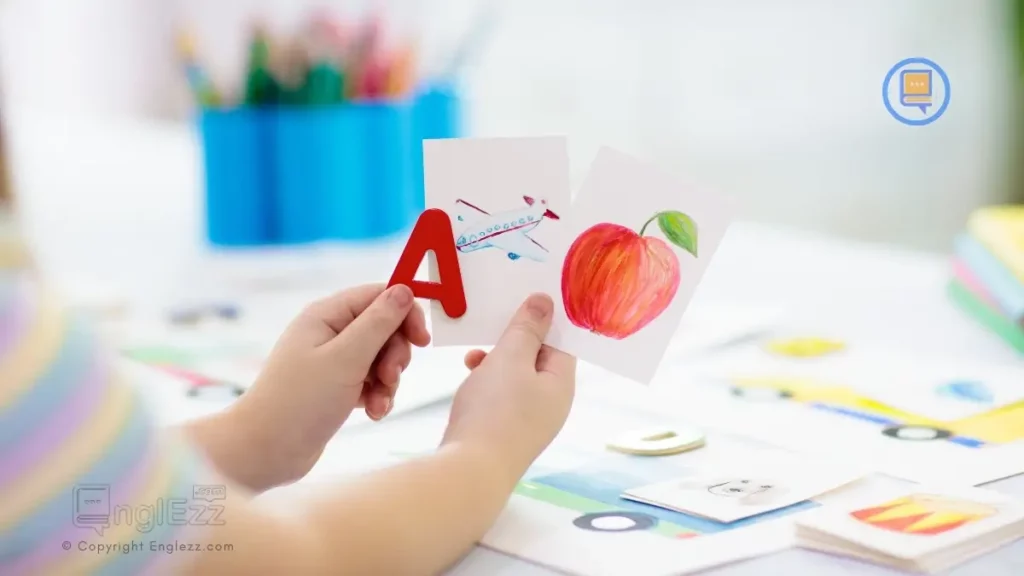
Furthermore, project-based assessments stimulate critical thinking and creativity among English language learners by challenging them to research, problem-solve, and present information using language effectively. Through project work, students are empowered to explore topics of interest while honing their language abilities in a meaningful way.
For instance, creating a podcast series discussing current global issues requires students to analyze information critically, synthesize ideas cohesively, and communicate persuasively – all essential skills in language acquisition. This approach not only assesses linguistic proficiency but also nurtures transferable skills that are valuable in academic and professional spheres.
Incorporating project-based assessments into the ELT curriculum enriches the learning experience by providing students with opportunities for self-expression and collaboration. By working on projects together, learners engage in peer feedback discussions that enhance their communication skills while fostering a sense of community within the classroom.
Projects such as creating a digital storytelling video or organizing a multilingual cultural fair allow students to showcase their unique talents and perspectives while demonstrating proficiency in English. Ultimately, project-based assessments go beyond mere testing; they inspire creativity, cultivate critical thinking skills, and empower ELT students to become confident communicators in an interconnected world.
Self-reflection Activities For Assessment
Self-reflection activities are powerful tools in the realm of English Language Teaching (ELT), fostering a deep understanding of one’s language proficiency and learning journey. By engaging students in self-assessment, educators empower them to reflect on their strengths, areas for improvement, and academic progress. This introspective approach not only cultivates a sense of responsibility but also enhances metacognitive skills crucial for effective language learning.
In an ELT classroom, self-reflection prompts can range from simple questions like “What language skills have I improved this week?” to more complex inquiries such as “How do I plan to enhance my vocabulary usage in daily conversations?” These prompts prompt students to assess their performance critically and set actionable goals for growth.
Encouraging Self-reflection Activities
Encouraging self-reflection activities in ELT classrooms not only enhances academic development but also nurtures essential life skills such as goal setting, self-awareness, and resilience. When learners take ownership of evaluating their linguistic competencies, they become active participants in their educational journey rather than passive recipients of knowledge. For instance, asking students to reflect on their listening comprehension strategies after a class discussion enables them to identify effective tactics and areas needing improvement. By fostering this reflective practice consistently, educators empower students to develop autonomy and agency over their language learning endeavors.
Incorporating Self-reflection Prompts
Incorporating self-reflection prompts into classroom assessments can be transformative for both teachers and students. Such activities create opportunities for meaningful dialogue on progress and challenges faced by learners, enabling educators to tailor teaching strategies accordingly. Moreover, by encouraging students to reflect on their learning experiences, instructors gain valuable insights into individual needs and preferences within the diverse ELT classroom environment. These reflective moments can spark productive discussions among peers, leading to collective growth through shared reflections and collaborative problem-solving approaches tailored to enhance overall language proficiency levels effectively.
In essence, integrating self-reflection activities as assessment tools in ELT not only empowers students but also fosters a culture of continuous improvement within the educational landscape. By promoting critical thinking skills through introspection and goal setting exercises, educators pave the way for enriched language learning experiences that transcend traditional measures of success. Self-reflection serves as a compass guiding learners toward personal growth milestones while instilling lifelong habits of self-assessment essential for navigating complexities in language acquisition and beyond in today’s dynamic global environment.
Portfolios for Language Assessment
Portfolios in English Language Teaching (ELT) offer a comprehensive view of students’ language proficiency and progress. Unlike traditional assessments that provide snapshots of learning, portfolios depict a holistic narrative of learners’ linguistic journey. By including a variety of artifacts such as essays, projects, presentations, and self-reflections, portfolios enable educators to assess different language skills across various contexts. For instance, a language portfolio might contain recordings of oral presentations showcasing speaking abilities, written essays demonstrating writing skills progression, and multimedia projects reflecting digital literacy.
To empower ELT students through alternative assessment methods, prioritize incorporating opportunities for student voice and choice in assessment tasks. Allow students to select topics of interest or propose project ideas that align with their passions. By integrating student interests into assessments, you can enhance engagement and motivation, leading to more meaningful learning outcomes. For example, consider giving students the freedom to choose how they showcase their language skills, whether through a presentation, a digital project, or a performance piece.
These curated collections not only document students’ language growth but also serve as reflective tools. Students can witness their own advancement over time by revisiting earlier entries compared to current work samples. Portfolios foster metacognitive awareness as learners engage in self-assessment by identifying strengths and areas for improvement. Teachers can guide students in setting goals based on portfolio feedback, encouraging them to take ownership of their learning outcomes. This process promotes autonomy and instills a sense of agency in students regarding their language development.
Creating effective language portfolios involves thoughtful curation and evaluation strategies. Educators can provide clear guidelines on portfolio contents and organization while allowing flexibility for personalization based on student interests and learning styles. Rubrics tailored for assessing portfolios should reflect the varied language competencies being evaluated and emphasize growth rather than just final products. Regular feedback loops between teachers and students ensure continuous improvement and alignment with learning objectives. Ultimately, portfolios not only assess language skills but also empower ELT students to become active participants in their linguistic journey through reflection, goal-setting, and personalized growth tracking.
Peer Assessment Techniques
Peer assessment techniques provide a powerful avenue for collaborative learning and evaluation in English Language Teaching (ELT). By engaging students in assessing their peers’ language proficiency, educators foster a sense of shared responsibility for improvement and create opportunities for constructive feedback. Collaborative evaluation not only enhances the learning interactions among students but also promotes a deeper understanding of language concepts through peer discussion and critique.
Implementing peer assessments effectively involves establishing clear criteria for evaluation and guiding students on providing thoughtful feedback. Best practices include training students on how to offer constructive criticism, emphasizing the importance of positive reinforcement alongside areas for improvement. For instance, in a speaking activity where students present dialogues they created, their peers can assess pronunciation, fluency, and content relevance. This process not only develops critical thinking skills but also cultivates empathy and respect among classmates.
Emphasizing the value of peer feedback in improving language proficiency is crucial in ELT classrooms. Through peer assessments, students learn to analyze written work or oral presentations critically, leading to enhanced self-awareness of their strengths and areas needing development. Peers act as motivators for each other’s growth by highlighting achievements and suggesting ways to overcome linguistic challenges. This approach not only diversifies assessment methods but also empowers students to take ownership of their learning journey while building mutual respect and camaraderie within the classroom dynamic.
Performance-Based Assessments: Enhancing Language Evaluation through Real-World Skills Application
Performance-based assessments offer a multifaceted approach to evaluating language proficiency by shifting the focus from rote memorization to practical application. These assessments provide students with opportunities to demonstrate their abilities in real-life language scenarios, allowing educators to gauge their linguistic competence authentically. By crafting performance tasks that mirror everyday language use, such as engaging in conversations, writing letters or reports, or delivering presentations, teachers can assess students’ communication skills in contexts that resonate beyond the classroom.
Designing performance assessments that align with ELT curriculum goals involves careful consideration of the specific language skills targeted for evaluation. For example, if the learning objective is to enhance students’ speaking proficiency, teachers can structure role-playing activities where learners act out dialogues relevant to different social situations. Such tasks not only assess conversational skills but also promote cultural understanding and empathy. Similarly, written assignments like composing emails or essays on pertinent topics assess students’ writing capabilities while fostering critical thinking and creativity.
The essence of performance-based assessments lies in their ability to provide a comprehensive view of students’ language competencies through experiential learning. By immersing learners in authentic language use scenarios, educators can effectively evaluate not just their linguistic accuracy but also their communicative effectiveness and problem-solving skills. Moreover, these assessments empower students to apply their knowledge in context-specific situations, bridging the gap between theoretical learning and practical usage. As such, incorporating performance-based assessments into ELT pedagogy equips learners with transferable skills essential for navigating real-world communication challenges confidently.
Peer assessment techniques
The application of game elements in non-game contexts has emerged as a dynamic tool in assessing English language skills. By infusing elements of play and competition into learning activities, gamification offers an innovative approach to assessment in ELT classrooms. Imagine students engaged in vocabulary challenges where they earn points by correctly identifying words or phrases. Additionally, simulations that require learners to navigate real-life language scenarios can make assessments more interactive and relatable. These gamified quizzes and challenges not only assess language proficiency but also create a sense of excitement and motivation among students.
When implementing alternative assessment methods in ELT, ensure that students have a clear understanding of the assessment criteria from the beginning. Clearly outline what is expected of them in terms of content, language proficiency levels, creativity, and overall presentation. Providing transparent criteria helps students focus on specific learning objectives and enables them to self-assess effectively throughout the process. For instance, create rubrics or checklists that break down the assessment components to guide students on how they will be evaluated.
Incorporating gamification principles into language assessments can transform traditional evaluation methods. By introducing elements like leaderboards, badges, or levels, educators can tap into students’ intrinsic motivation to excel in their language learning journey. For example, a virtual language escape room activity could test students’ ability to solve language puzzles under time pressure, enhancing their problem-solving skills while assessing linguistic competence simultaneously. The immersive nature of these gamified assessments not only captures students’ interest but also encourages them to actively participate and demonstrate their language abilities within a stimulating environment.
Moreover, the feedback loop inherent in gamification fosters continuous improvement and growth for ELT students. By providing instant feedback on performance and progress through interactive challenges or simulations, learners receive valuable insights into their strengths and areas for development. This iterative process of assessment allows students to track their advancement over time while enjoying the engaging nature of gamified tasks. Ultimately, by embracing gamification for assessment purposes in ELT settings, educators have the opportunity to revolutionize traditional evaluation practices and nurture a more interactive and enjoyable learning experience for English language learners.
Differentiated Assessments for Diverse Learners
In the realm of English Language Teaching (ELT), recognizing and embracing the diversity among learners is key to fostering an inclusive and effective learning environment. Utilizing differentiated assessment approaches acknowledges that students have varying abilities, learning styles, and preferences. By tailoring assessments to meet individual needs, educators can ensure that each student’s progress is accurately measured while also allowing them to demonstrate their understanding in ways that suit them best.
One strategy for accommodating diverse learners in ELT assessments is offering a range of assessment formats. For instance, providing options such as written assignments, oral presentations, multimedia projects, or role-playing activities can better capture the diverse talents and strengths of students. By allowing learners to showcase their language proficiency through mediums they excel in, educators honor different intelligences and cater to various learning modalities within the classroom.
Moreover, embedding flexibility into assessment criteria can enhance inclusivity. Offering choices within assignments or assessments allows students to select tasks that align with their interests or strengths while still meeting the intended learning outcomes. For example, in evaluating a reading comprehension exercise, students could choose between writing a summary, creating a visual representation, or engaging in a discussion forum about the text. This flexibility not only fosters student autonomy but also ensures that assessments are more reflective of diverse linguistic capabilities.
By championing differentiated assessments tailored to diverse learners’ needs, educators amplify student engagement, motivation, and success in ELT settings. Embracing inclusive assessment practices not only values individual differences but also equips all students with equal opportunities to shine and grow within their language acquisition journey. Ultimately, by recognizing and celebrating diversity through varied assessment methods, educators empower every learner to thrive and realize their full potential in mastering English language skills.
Technology Integration in Language Assessment
In the realm of English Language Teaching (ELT), technology integration has emerged as a game-changer in the assessment landscape. Educators are harnessing the power of digital tools to revolutionize language assessments, making them more dynamic and interactive. By incorporating technology platforms, apps, and software tailored for language testing, teachers can provide students with engaging assessment experiences that go beyond traditional methods. For instance, online language proficiency tests like Duolingo or Babbel not only assess grammar and vocabulary but also use algorithms to adapt to each learner’s progress, providing personalized feedback and evaluation.
Digital platforms offer opportunities for automated language testing, where immediate results can be generated efficiently through computerized scoring systems. This instantaneous feedback helps students track their performance in real-time and allows educators to tailor instruction based on individual strengths and weaknesses. Additionally, technology-enhanced assessments promote student engagement by leveraging multimedia elements such as audio recordings, videos, and interactive quizzes that cater to diverse learning styles. For example, language learning apps like Rosetta Stone incorporate speech recognition technology to assess pronunciation and oral fluency accurately.
The implications of technology integration in language assessment extend beyond just streamlined evaluation processes. Modern ELT pedagogy benefits from tech-enabled assessments by promoting a blended learning environment where students can access resources online, engage with immersive content, and participate in collaborative exercises seamlessly.

Virtual reality tools like VR headsets can create simulated language environments for assessment purposes, enhancing students’ cultural understanding and communication skills. By embracing innovative technologies in language assessments, educators can nurture 21st-century skills such as digital literacy and critical thinking while optimizing student engagement and learning outcomes in ELT contexts.
Foster a culture of peer collaboration and feedback within your ELT classroom when using alternative assessment methods. Encourage students to work together on projects, provide constructive criticism to one another, and engage in reflective discussions about their language development. Peer interactions can enhance communication skills, cultural understanding, and teamwork while also offering diverse perspectives on language use. Consider organizing peer review sessions where students can exchange insights and support each other’s growth in language proficiency.
As we look towards the future of ELT assessment practices, the strategic inclusion of technology remains instrumental in fostering a dynamic educational ecosystem that caters to diverse learner needs effectively. Technology integration not only enhances assessment methods but also empowers both educators and students to navigate the ever-evolving demands of language teaching and learning. By staying abreast of technological advancements and leveraging digital resources thoughtfully in language assessments, ELT practitioners can create rich learning experiences that inspire language proficiency growth among learners of all backgrounds and abilities.
Empowering ELT Learning Through Innovative Assessment Approaches
In closing, the integration of innovative assessment approaches presents a powerful opportunity to transform English Language Teaching (ELT) and elevate student learning outcomes. By embracing alternative assessment methods that go beyond traditional tests, educators can create dynamic and engaging learning experiences that cater to diverse learner needs. Technology plays a pivotal role in revolutionizing language assessment, offering interactive platforms that adapt to the digital age and enhance student engagement. Utilizing technology tools for language assessments not only provides instantaneous feedback but also allows for personalized learning paths tailored to individual student progress.
Moreover, incorporating project-based assessments, self-reflection activities, portfolios, peer evaluation techniques, performance tasks, and gamified quizzes into ELT curricula fosters a more comprehensive understanding of students’ language proficiency levels. These methods encourage critical thinking, collaboration, creativity, and authentic language use in real-world scenarios – skills essential for students to thrive in today’s globalized society. Embracing differentiated assessments further ensures inclusivity and equity in evaluating diverse learners’ linguistic abilities and aptitudes.
Ultimately, empowering ELT learning through innovative assessment approaches requires a shift towards student-centered evaluations that prioritize holistic growth and skill development. By leveraging these engaging assessment methods effectively, educators provide students with the tools they need to become confident communicators and lifelong learners proficient in English language skills. As we navigate the evolving landscape of education, it is clear that investing in creative and meaningful ways to assess language proficiency is key to shaping a generation of empowered global citizens ready to navigate an interconnected world seamlessly.
Elevating ELT Learning Through Innovation
As we conclude our exploration of alternative assessment methods for English Language Teaching (ELT), it is evident that the landscape of education is evolving towards more engaging and empowering approaches to student evaluation. By embracing project-based assessments, self-reflection activities, portfolios, peer assessment techniques, performance-based evaluations, gamification, differentiated assessments, and technology integration in language assessments, educators can truly revolutionize ELT learning experiences.
By incorporating diverse and dynamic assessment methods into their teaching practices, educators have the opportunity to empower students to take ownership of their learning journey. These innovative approaches not only assess language proficiency but also foster critical thinking, creativity, collaboration, and a deeper understanding of real-world applications of language skills. As we move forward in reshaping the future of ELT through these engaging assessment methods, let us remember that every student has a unique path to success, and by embracing inclusive practices that cater to diverse learner needs, we can truly unlock the full potential of each individual in our classrooms.
FAQs:
Q: How can project-based assessments benefit ELT students?
A: Project-based assessments allow students to apply language skills in real-world contexts while fostering collaboration and creativity.
Q: Why are self-reflection activities important in ELT?
A: Self-reflection activities empower students to track their progress and take responsibility for their learning journey.
Q: What role do portfolios play in assessing language skills?
A: Portfolios offer a holistic view of students’ development over time and showcase their growth in various language competencies.
Q: How does peer assessment enhance learning interactions among ELT students?
A: Peer assessment promotes collaboration and constructive feedback exchange among students, leading to improved language proficiency.
Q: Why is technology integration crucial in modern language assessments?
A:** Technology tools enhance assessment dynamics by providing interactive platforms for testing and automation while engaging students with modern pedagogical approaches.

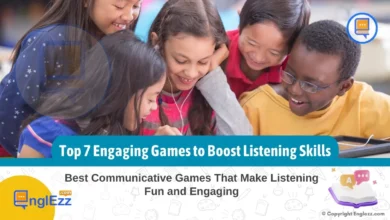

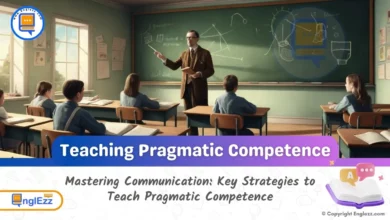


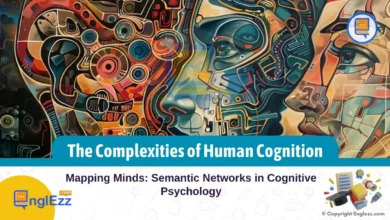
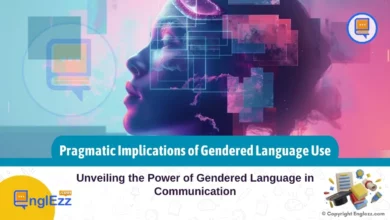

🔥 🧑🎓 Break free from traditional testing in ELT! Learn how alternative assessment methods can transform student empowerment and success.